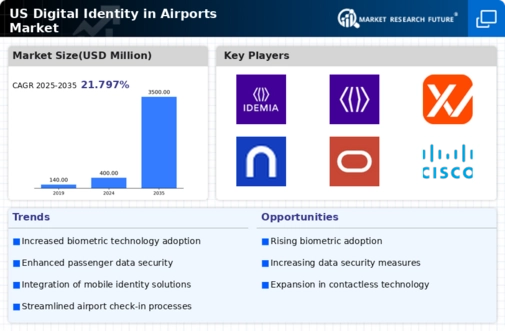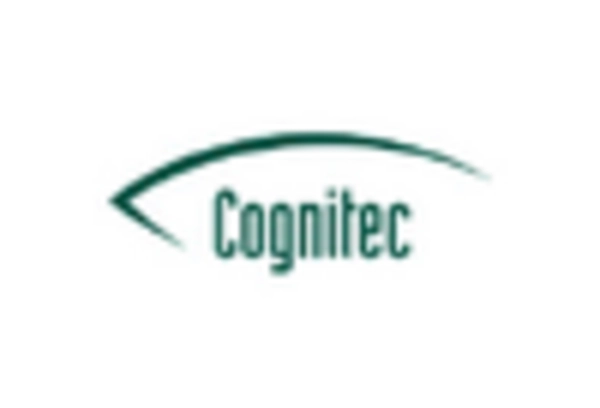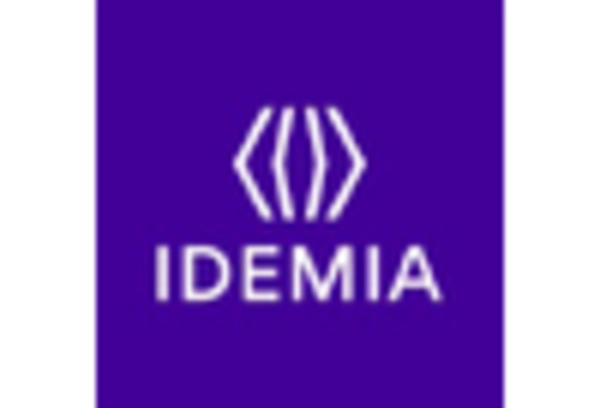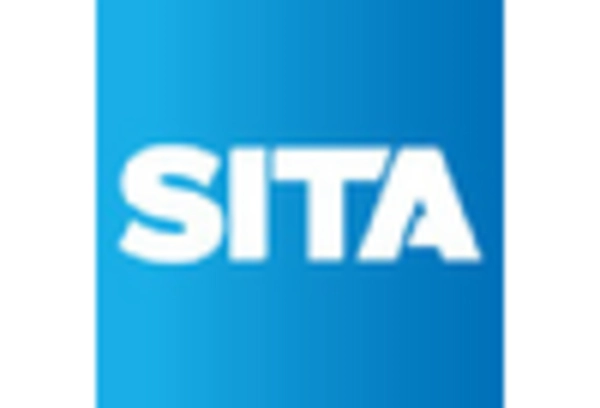Growing Demand for Seamless Travel Experiences
The digital identity-in-airports market is experiencing a surge in demand for seamless travel experiences. Travelers increasingly seek efficient and hassle-free processes, prompting airports to adopt advanced digital identity solutions. According to recent data, approximately 70% of travelers express a preference for automated check-in and boarding processes. This trend indicates a shift towards technologies that streamline identity verification, thereby enhancing passenger satisfaction. As airports implement digital identity solutions, they can reduce wait times and improve operational efficiency. The integration of biometric technologies, such as facial recognition, plays a crucial role in this transformation. By leveraging these innovations, airports can create a more fluid travel experience, ultimately driving growth in the digital identity-in-airports market.
Increased Focus on Passenger Safety and Security
Passenger safety and security remain paramount concerns for airports, driving the digital identity-in-airports market. In light of evolving security threats, airports are compelled to adopt more sophisticated identity verification methods. The implementation of digital identity solutions, such as biometric screening, enhances security protocols while expediting the passenger flow. Recent studies indicate that 80% of airport executives prioritize security enhancements as a key investment area. This focus on safety not only protects travelers but also builds trust in the airport experience. As security measures become more stringent, the demand for effective digital identity solutions is likely to rise, further propelling the growth of the digital identity-in-airports market.
Regulatory Support for Digital Identity Solutions
Regulatory frameworks in the US are increasingly supportive of digital identity solutions, which is a key driver for the digital identity-in-airports market. Government initiatives aimed at enhancing security and efficiency in air travel are encouraging airports to adopt digital identity technologies. For instance, the Transportation Security Administration (TSA) has been promoting the use of biometric identification to streamline security processes. This regulatory backing not only fosters innovation but also instills confidence among stakeholders in the aviation sector. As compliance with regulations becomes more critical, airports are likely to invest in digital identity solutions that align with these guidelines. The potential for increased funding and support from government agencies further propels the growth of the digital identity-in-airports market.
Technological Advancements in Identity Verification
Technological advancements are significantly influencing the digital identity-in-airports market. Innovations in artificial intelligence (AI) and machine learning are enhancing the accuracy and efficiency of identity verification processes. For example, AI-driven facial recognition systems can process passenger data in real-time, reducing the likelihood of errors and improving security measures. The market for biometric systems is projected to reach $30 billion by 2026, indicating a robust growth trajectory. As airports increasingly adopt these technologies, they can enhance their operational capabilities while ensuring a secure environment for travelers. The integration of advanced identity verification technologies is likely to be a pivotal factor in the evolution of the digital identity-in-airports market.
Rising Consumer Expectations for Privacy and Control
As consumers become more aware of data privacy issues, their expectations regarding personal information management are rising. This trend is particularly relevant to the digital identity-in-airports market, where travelers seek greater control over their data. Airports are increasingly tasked with implementing solutions that not only enhance security but also respect passenger privacy. According to surveys, over 60% of travelers express concerns about how their personal data is used. In response, airports are adopting transparent data management practices and investing in technologies that empower passengers to manage their digital identities. This shift towards consumer-centric privacy measures is likely to drive innovation and growth within the digital identity-in-airports market.

















Leave a Comment